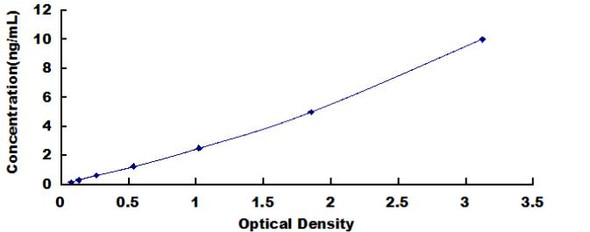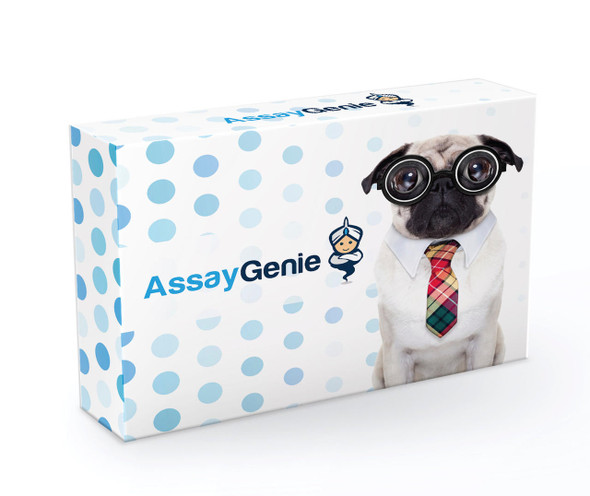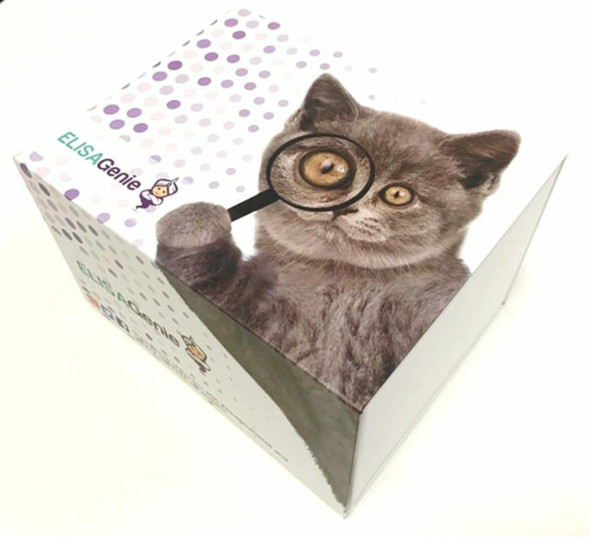Description
| Product Name: | QuickStep Human NGAL (Neutrophil Gelatinase Associated Lipocalin) ELISA Kit |
| Product Code: | AEES00632 |
| Assay Type: | Sandwich |
| Format: | 96 Assays |
| Assay Time: | 2.5h |
| Reactivity: | Human |
| Detection Range: | 0.13-8 ng/mL |
| Sensitivity: | 0.06 ng/mL |
| Sample Type & Sample Volume: | Serum, plasma, urine, 50μL |
| Specificity: | This kit recognizes Human NGAL in samples. No significant or interference between Human NGAL and analogues was observed. |
| Reproducibility: | Both intra-CV and inter-CV are < 10%. |
| Application: | This ELISA kit applies to the in vitro quantitative determination of Human NGAL concentrations in serum, plasma, urine.Please consult technical support for the applicability if other biological fluids need to be tested. |
This ELISA kit uses the Sandwich-ELISA principle. The micro ELISA plate provided in this kit has been pre-coated with an antibody specific to Human NGAL. Samples (or Standards) and biotinylated detection antibody specific for Human NGAL are added to the micro ELISA plate wells. Human NGAL would combine with the specific antibody. Then Avidin-Horseradish Peroxidase (HRP) conjugate are added successively to each micro plate well and incubated. Free components are washed away. The substrate solution is added to each well. Only those wells that contain Human NGAL, biotinylated detection antibody and Avidin-HRP conjugate will appear blue in color. The enzyme-substrate reaction is terminated by the addition of stop solution and the color turns yellow. The optical density (OD) is measured spectrophotometrically at a wavelength of 450 ± 2 nm. The OD value is proportional to the concentration of Human NGAL. You can calculate the concentration of Human NGAL in the samples by comparing the OD of the samples to the standard curve.
| Kit Components: | An unopened kit can be stored at 2-8℃ for six months. After test, the unused wells and reagents should be stored according to the table below.
|
| 1. | Add 50μL standard or sample to the wells, immediately add 50μL Biotinylated Detection Ab working solution to each well. Incubate for 90 min at 37°C |
| 2. | Aspirate and wash the plate for 3 times |
| 3. | Add 100μL HRP conjugate working solution. Incubate for 30 min at 37°C. Aspirate and wash the plate for 5 times |
| 4. | Add 90μL Substrate Reagent. Incubate for 15 min at 37°C |
| 5. | Add 50μL Stop Solution |
| 6. | Read the plate at 450nm immediately. Calculation of the results |
Neutrophil gelatinase associated lipocalin (NGAL) also known as Lipocalin 2 or Lcn2 is a 25 kDa, is a member of the lipocalin superfamily and a pleiotropic mediator of various inflammatory processes [1].NGAL, identified originally as a protein associated with matrix metalloproteinase 9 (MMP-9) of human neutrophils. Lipocalins are extracellular proteins which share a common tertiary structure that forms a barrel-like hydrophobic ligand binding site. When bound to MMP-9, NGAL protects it from proteolytic degradation sustaining the proteolytic activity of MMP-9. Neutrophil gelatinase-associated lipocalin (NGAL), is released by various cell types and is an attractive biomarker of inflammation, ischemia, infection, and kidney damage. Both intestinal and metabolic inflammation, as observed in obesity and related disorders, are associated with increased NGAL synthesis [2]. While NGAL in the intestinal tract regulates the composition of the gut microbiota and shows anti-inflammatory activities, it also exhibits proinflammatory activities in other experimental settings. Plasma NGAL is a novel marker of kidney function, which correlates to duration of end-stage renal failure (ESRD) and serum creatinine in uremic patients awaiting kidney transplantation. Plasma NGAL is associated with homocysteine in transplanted patients.






